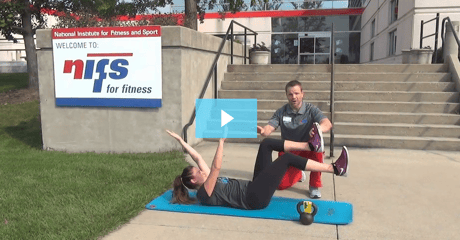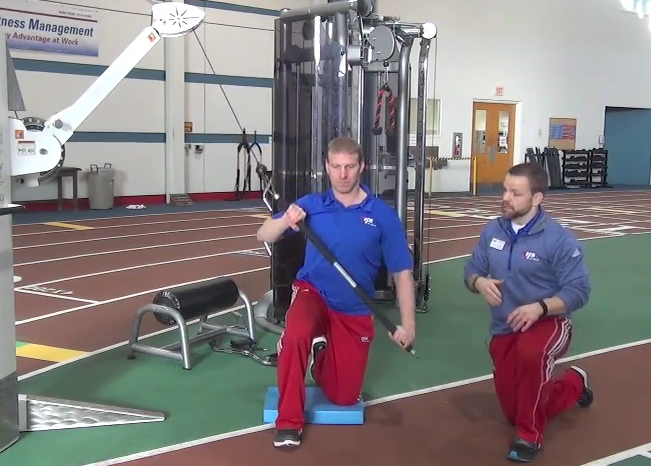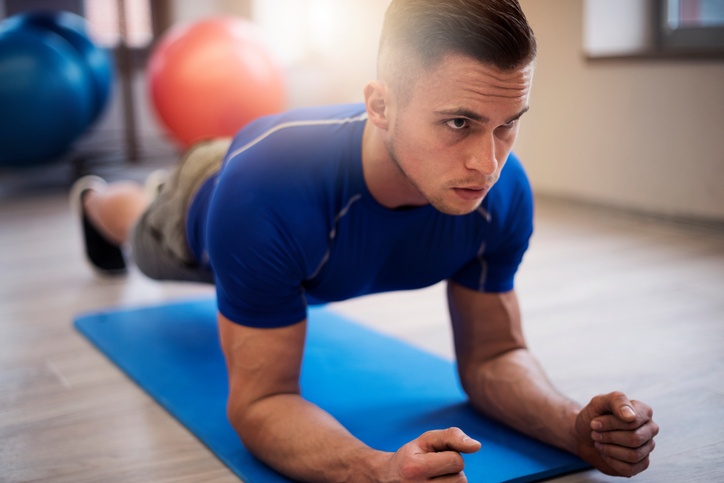When most people think about core exercises, they just think of sit-ups or crunches; however, there are many options people don’t know about or forget. If you are only doing crunches, you’re not working your entire core. Think of your core as a cylinder; you have to work every part. Crunches target only one section, but they give you the “feeling the burn” sensation that makes you feel you got in solid core work.
 Here are the top 5 core strength exercises that I think you should try.
Here are the top 5 core strength exercises that I think you should try.
1. Deadbugs
Deadbugs are an underrated core exercise. They look easy, but don’t let that fool you! They will work your core. Here’s how to do it:
- To start, lay flat on your back, arm straight up toward the ceiling, leg up with a 90-degree bend with knees pointed toward the ceiling.
- Once in your starting position with your low back in contact with the floor, start by slowly lowering your right arm/left leg down to a hover above the ground.
- Then repeat on the other side.
The most important thing to remember with these is keeping your lower back pushed into the floor. Once you’ve lost contact, you’re no longer working your core as much as you could be. Make sure your movements are slow and controlled. If you go too fast, you won’t feel these as much.
2. Anti-rotation Hold or Press
When you think of working your oblique muscles, rotation exercises always come to mind. What many don’t know is that resisting rotation can be even more challenging than rotating. This can be done using a cable or a band. Follow these steps:
- The band/cable should be at chest height.
- Once you have the right position, grab the handle with the hand that is farthest away; then place the other hand on top. This prevents your shoulder from doing more work than it needs to.
- Once you have a hold of the handle, bring it in front of your chest.
If you would like more of a challenge, hold your arms out straight.
3. Chops/Lifts
 Chops and lifts can be done with a medicine ball or with the cable machine. To start, you should do these in the half-kneeling position (watch video) so that you can’t get any help from your legs.
Chops and lifts can be done with a medicine ball or with the cable machine. To start, you should do these in the half-kneeling position (watch video) so that you can’t get any help from your legs.
- When you are doing chops, the knee closest to the cable machine (or your partner, if using a medicine ball) should be up. Think of this as a rowing-a-boat motion; you are chopping high to low.
- When doing the lift, the knee farthest away from the cable machine is up. The start position is low, then you are lifting up and across your body.
4. Crawling Patterns
Bear crawl, dog crawl, alligator crawl, inch worm, scorpion crawl, lateral crawl—there are many different ways to crawl! These are great work for your core. Working on moving your opposite arm/leg works on the cross patterns. When crawling, to get in the most core work, you want to try to get little to no hip shifts. Trying to keep your hips square to the ground will allow your core to do more work.
5. Turkish Get-ups
Everyone’s favorite way to get off the ground! Turkish get-ups work much more than just your core, but are great to have in your core exercise bank.
***
Try these core exercises during your next workout. Stop by the NIFS track desk if you need to see a demonstration.
This blog was written by Kaci Lierman, Health Fitness Instructor. To read more about the NIFS bloggers, click here.


 Some of the number-one fitness goals are to strengthen the core, lose belly fat, and get six-pack abs. These are all pretty good goals that can be addressed by a fitness professional and a dietitian, but everyone might not have that luxury. From a traditional perspective, we have mainly used a few ab exercises such as crunches, sit-ups, and variations of them. For the most part, these are better than the alternative—nothing at all.
Some of the number-one fitness goals are to strengthen the core, lose belly fat, and get six-pack abs. These are all pretty good goals that can be addressed by a fitness professional and a dietitian, but everyone might not have that luxury. From a traditional perspective, we have mainly used a few ab exercises such as crunches, sit-ups, and variations of them. For the most part, these are better than the alternative—nothing at all. Anti-rotational holds: Using either a cable machine or bands, stand perpendicular to the anchor point while holding your handle directly in front of your midpoint. To increase the intensity, I suggest introducing a kneeling or half-kneeling position, making the core work even harder.
Anti-rotational holds: Using either a cable machine or bands, stand perpendicular to the anchor point while holding your handle directly in front of your midpoint. To increase the intensity, I suggest introducing a kneeling or half-kneeling position, making the core work even harder.